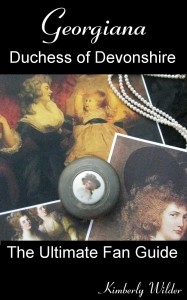New York: Making Every Vote Count
By Don Heppner
‘When the votes disappear into cyberspace and you ain’t got that paper ballot, you’re in trouble.’ Ion Sancho, Supervisor of Elections, Leon County, Florida
 This article appeared in The Bedford Record Review. It is reposted here with permission of the author.
This article appeared in The Bedford Record Review. It is reposted here with permission of the author.
As the February 2007 decision on new electronic technology voting machines looms closer, some counties in New York State are fighting to keep the old lever machines.
Suffolk County has filed a lawsuit against the state to prevent the state from forcing the county to purchase new technology in favor of keeping the old lever machines, except for one high-tech machine in each district for the handicapped to vote.
The two machines being considered by New York State are electronic touch screens and optical scanners. The electronic touch screen machines do not have a reliable paper trail to audit an election. The optical scanners have the actual ballots to conduct an audit, according to Ion Sancho.
Mr. Sancho, a former New Yorker, is considered an expert on voting machines, and was recently interviewed for an HBO special, “Hacking Democracy,” on voting machines and the voting process. He is the supervisor of elections in Leon County Florida, an elected position.
 Mr. Sancho was put in the national spotlight when he gave a Finnish security expert, Harri Hursti, access to one of Leon County’s Diebold optical scan voting machines to see whether the machine could be hacked into and the vote count altered.
Mr. Sancho was put in the national spotlight when he gave a Finnish security expert, Harri Hursti, access to one of Leon County’s Diebold optical scan voting machines to see whether the machine could be hacked into and the vote count altered.
The test was conducted in December of 2005. Eight ballots were used in the test. Six of the ballots were checked “no” on a ballot question and two ballots voted “yes.” The votes were run through an optical scanner machine after Mr. Hursti tinkered with the software. The result was the opposite of what should have been the outcome. Six votes were “yes” and two votes were registered as “no.”
“I like the optical scanners, but not because I like Diebold,” Mr. Sancho said. “You could shoot the Diebold executives from my point of view and I wouldn’t lose a thing.”
Mr. Sancho said that when he bought the optical scan system in 1992, it was not owned by Diebold. Then the company was called Unisys. “I like the technology because it allows my own technicians to program the ballot, and we print our own ballots and I don’t ever have to talk to the vendor.”
He said that independence from manufacturers was ideal because less chance for tampering could occur. Because Unisys didn’t know anything about elections, they sold the technology to Global Election Systems in 1995, Mr. Sancho said. “I dealt with Global until 2002 and they were OK,” he said.
He said he did notice declining quality control as more optical scanning systems were sold, and they had to expand their assembly line. In 2002, Global Election Systems sold the system to Diebold.
“The people or the company is irrelevant,” he said. “It is the technology and auditing principles that can be brought to bear that are important to a legitimate election.”
Mr. Sancho said he can make any repair necessary on his voting machines, including inserting new motherboards. “We beta tested the product and became the national showcase for the optical scan technology for Unisys and for Global,” he said. “Our staff developed a very good working expertise with the devices, and we don’t need to see the company representatives unless it is something we can’t handle, and that has not occurred in a long time.”
The ability to be independent with the technology is one reason the optical scan systems appealed to Mr. Sancho, and his advice is to make sure the technicians are not wed to the company and dependent on the manufacturer for repair. “Build elections independent from the vendor,” he said. “The same firewall that ensures no one can access your electronic records should also be raised between the user and the vendor because there is a potential conflict of interest.”
Vendors are all alike, he said, in that they will all tell you that their computers are the best, but that should be learned over time through experience.
“The real reason I like optical scanning is because I can audit the results absent of the technology,” he said. “Optical scanning provides for a transparent method to audit every vote, as we found out in the 2000 election, when we were descended upon by hordes of media. The very fact that every one of my 103,000 voters voted on a piece of paper ensured an accurate election.” Optical scanners allow for a transparent audit that beats all other systems. “When the votes disappear into cyberspace and you ain’t got that paper ballot, you’re in trouble,” he said.
During the 2000 election, when voter tabulation chaos ruled in Florida, the National Institute of Standards Technology said that Leon County ran a perfect election, according to Mr. Sancho. All errors made on purpose or accidentally were less that 18 hundredths of one percent.
Mr. Sancho was a certified lever voting machine technician out of Jamestown in upstate New York before he moved to Florida.
The problem with the lever machines, as he sees it, is that some places would not let him bring the machines back after floors were damaged from the 1,000-pound machines. “You have to be careful of the kind of floor you move it across,” he said. “Schools would not allow me to put the lever machines into gymnasiums.” He said that the machines can actually break floors.
“The hardest job I have in an election is not counting the votes but providing accessible polling locations,” he said. “The ability to store that optical equipment in a broom closet and not tear up floors and not give the senior citizens who are deploying them hernias is a positive for the optical and a negative for the lever machines.”
Only one optical scanner is needed in a precinct. The other terminals can be dumb terminals. “You can have one optical scanner and 30 privacy booths,” he said. “You can have 30 people voting at any one time.”
It would take many more lever machines to handle a similar crowd. If there is a malfunction in the optical machine, the voters would still be able to mark their ballots and place them in a segregated ballot box to be counted later.
The controversy promises to go on. New Yorkers have come to love the private voting experience accomplished when the curtain is drawn and the voter is alone with the choices.
Filed under: election, elections, Electronic Voting, grassroots democracy, New York State Politics, video Tagged: | UFPJ


 .
.




Leave a Reply